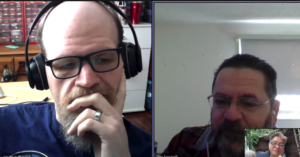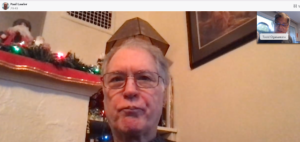As Nobel Laureate Bob Dylan wrote: The Times They Are a-Changin’
In this podcast, Jon Westfall and I discuss to loss over services or, at least, the important aspects of some long time valued services.
- Todd: My iOS devices and MacBook Pro lost pairing with my AirPods Pro. After repairing, I noticed that the AirPods had the added text “- Find My” added to the device name. Then, each re-paired device lost pairing again. Paired one more time. Text suffix dropped. But, could not connect as a speaker device. AirPods Pro might be toast
- Microsoft kills off Outlook.com Premium, bundles features into Office 365
Microsoft ended custom domain support for Outlook Premium back in 2017. However, I’ve able to get it renewed each year since then by contacting a human Microsoft support person. This option, sadly for me, ends this year since I found it impossible to find a human to renew this grandfathered service. I called customer service at 1 (800) 642-7676. However, that resulted in an IVR that basically says, “shove it, go to support.microsoft.com”
- Google is putting an end to free legacy G Suite
Jon has several free legacy G Suites… which he is 50/50 on losing. On one hand, it’s been great having all of those free features and 50 users. On the other hand, he never used them and now has a strange sense of freedom moving forward. It’s a good thing that iCloud now allows you to set up a custom From: header – Jon might go to iCloud for his personal email.
Jon: Apple iCloud added custom domains forwarding last year
- Google Voice will lose some of its best web features in February
You are receiving this email because you have a consumer (personal) Google Voice account and are one of the few remaining users using a legacy web feature that may be impacted as we complete the migration of all Voice users to the modern experience (which launched in 2017).
In July 2020 we posted an update indicating the Legacy Web version of Voice would soon stop receiving updates, aligned with our plans to migrate all users to the modern Voice web experience which was launched in 2017. Since then, we have brought key features from the Legacy Web version over to the modern Voice web experience including, most recently, the new and improved Custom call forwarding which launched in December 2021.
Available via Google Music Podcasts and Apple iTunes.
MobileViews Podcast from Audible.com




